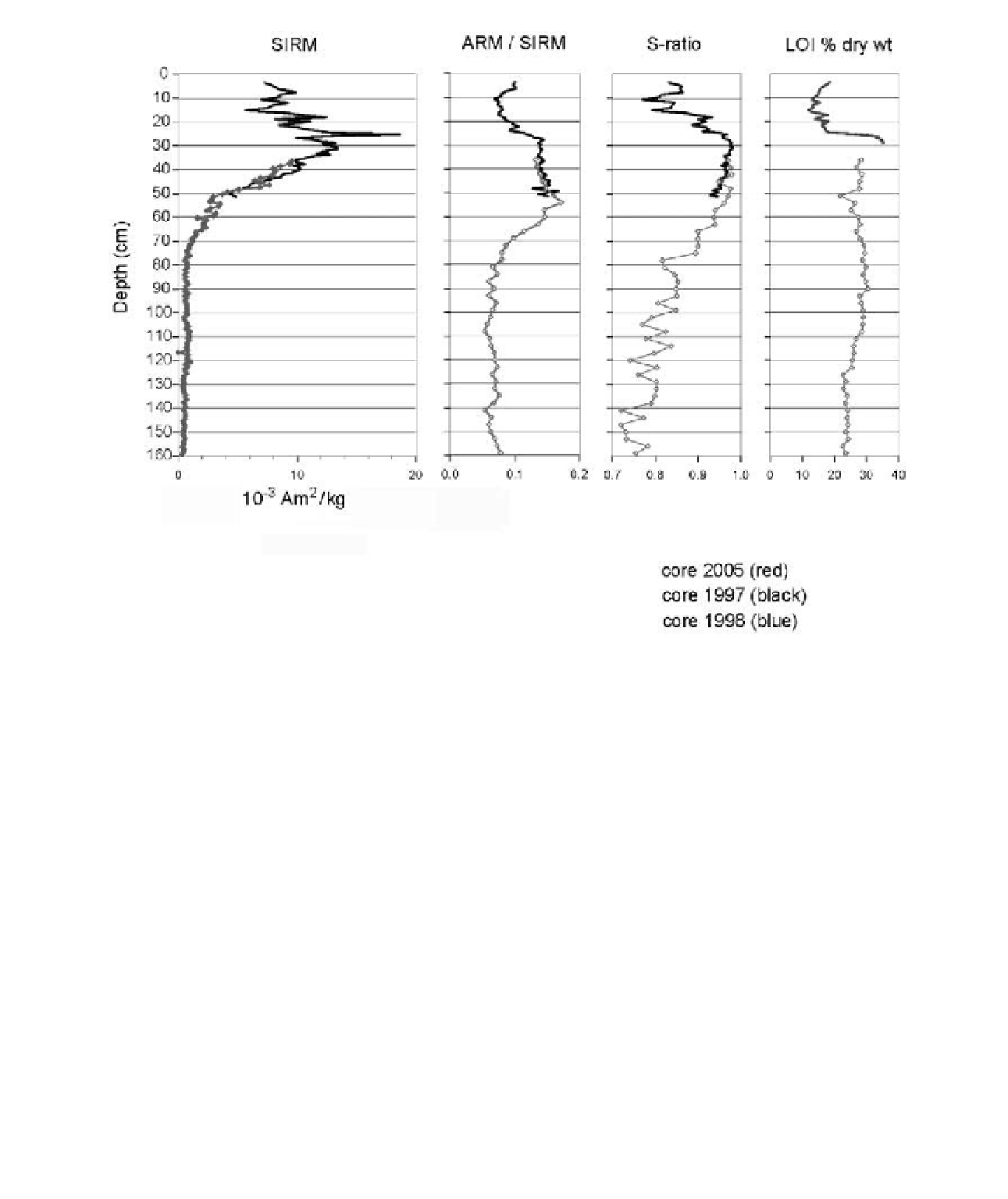Geology Reference
In-Depth Information
Fig. 8.9
Magnetic parameters measured for Lake Ely sediment collected by piston core (shown in red) compared to sediment
collected from gravity cores (black). The parameters show evidence of reduction diagenesis causing dissolution of the
magnetosomes generated in the water column. (See Colour Plate 18)
downcore, suggesting that the magnetic minerals from
the lake's watershed soils are more important in the
lake's sediment. The ARM/SIRM ratio also decreases
over this depth range showing that the magnetic grain
size increases as the concentration decreases.
The evidence is strong that reduction diagenesis,
due to the high concentration of organic material (
c.
25%), has dissolved away most of the magnetosomes
that were deposited in the lake. This conclusion still
needs to be tested by detailed TEM examination of mag-
netic mineral extracts above and below the precipitous
decrease in magnetic intensity downcore. It is the most
likely explanation given the high organic content of
the sediment, but there is still the possibility that mag-
netosome production 'turned on' at a depth of 75 cm.
Varve counting suggests that dissolution occurs by
about 1200 years after deposition, in sediment that
was deposited at about 800 CE. The settlement of the
lake watershed at 1820 CE based on historical records
is marked by a sharp decrease in organic matter
(decrease in LOI) due to increased erosion from the
watershed and a commensurate increase in magnetic
mineral concentration. It is this increase in material
eroded from the watershed that increases the thickness
of the varves and allows detailed magnetic examina-
tion of the dark organic-rich layers of the varves in
comparison to the lighter silt-rich layers.
The environmental magnetic properties of the lake
sediments were characterized in more detail, both at
shallow depths before dissolution had occurred and at




Search WWH ::

Custom Search